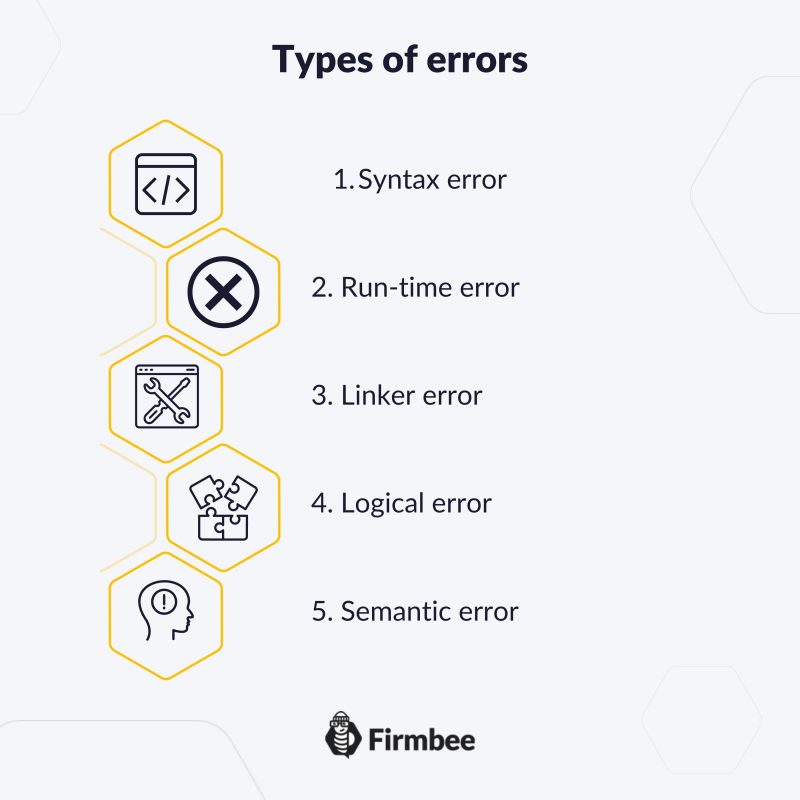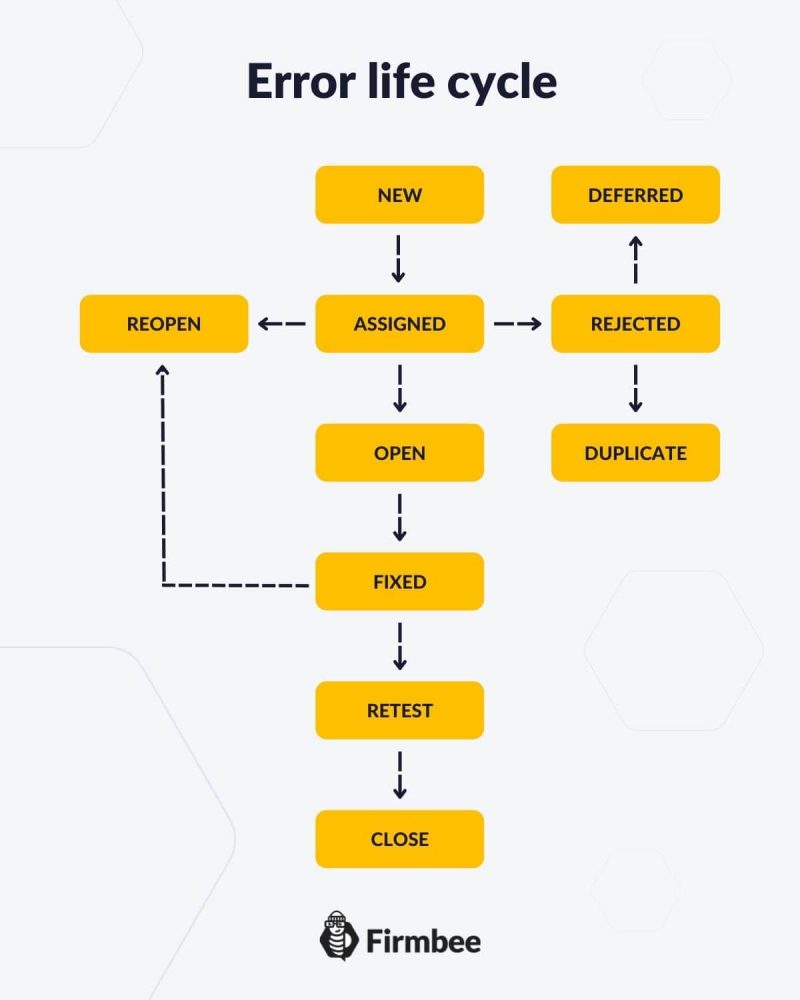Software errors are an inherent part of process of software creation. It may be practically impossible to make a program in which there would be no errors found during testing stages. Theoretically, in case of very simple programs errors may not occur, but in the situation, when the software contains a complex code. Projects that are complicated and extensive have to be tested to remove all the errors and bugs at an early stage of work.
Software errors – table of content:
- Reasons for software errors
- Life cycle of an error
- Significance levels of errors in software
- Summary
Reasons for software errors
The errors in software come are caused by so called bugs or failures and those are main reasons for bad functioning of the software. The occurrence of errors is possible at any stage of creation of the software. Most often errors are to be found in the code itself and are caused by human actions. The defect found in one part of the software may have an impact on the other parts of the same software, especially if both are connected. An error is a result of a defect, both may lead to serious failures, which can manifest themselves during running of the software.
Accordingly to International Software Testing Qualification Board, there are many different reasons for software errors and those are:
- human imperfection
- pressure of time
- lack of qualification, skill or experience
- bad communication in the team
- invalidly written specification
- complexity of: code, project or technology
- misunderstandings related to the interface inside the system and between systems – especially in case of a high number of those systems
- implementation of new technologies
As it was mentioned before, errors lead to defects and defects lead to failures, here it is wort to note that failures not always are caused by a human error. The occurrence of failures may be caused by other phenomena such as: radiation, electromagnetic field, or contamination. Such factors influence the operation of the software by changing the external conditions that affect the hardware.
Life cycle of an error
Life cycle of an error is a process, which begins at the moment of error’s discovery and reporting to the moment of the fixing and task closure. The length of the cycle depends from the severity of the error Complexity of the error may significantly extend or shorten the time needed for fixing. There are many programs that are used to monitor software errors, and the choice of the program may affect the life cycle of an error.
The exemplary life cycle is simple. At the first stage the error is reported in the notification and gets an open status. In the notification there is a path that allowed the tester to find the error. Additionally, the programmer, who deals with the task is assigned in the notification and as soon as he starts to fix the error its status changes into in progress. This information is particularly important for the tester, who can start testing the software as soon as the notification changes into ready for test.
The second component is the feedback. When all the surveys are being filled up by the respondents one nice and tidy report has to be created. The whole information has to be reviewed attentively so the all important insight can be gathered. This is particularly important because it is easy to misinterpret the findings. Survey used for the given case has to well adjusted and sound.
The tester starting his operation changes the status into test in progress and after finishing chooses one of two options: resolved (in case of successful repair) or reopened (if software error still needs reparation). In such way programmer get notification about the necessity to restart work on the error.

Significance levels of errors in software
The software errors may be divided accordingly to significance levels, which is being granted by testers. The significance level pass the information about the impact of the error on program functioning. The higher significance level of an error the faster it should be fixed.
The highest of level of significance is called blocker since its occurrence means the complete lack of further ability to use the program and necessity to stop testing it. The example of the blocker is a software error, which turns off the application. Such error requires quick fixing to enable further testing.
The lower level of significance is called critical because the software error of that level makes using all the functions of the program difficult. Such software error doesn’t block completely testing, but it has great impact on testing process, and the software cannot be released without fixing this problem.
The major level of significance is quite important but it doesn’t hold the testing process.
The error of medium level of significance is an error of moderate gravity, that does require fast reaction since it does not obstruct tests making.
5. Empowerment of individuals – when 360 degree feedback is used all employees have a chance to voice their concerns. Individuals may feel that they have a voice and that the company respects their view and opinion, hence any type of action in result employees are heard has a positive impact on staff morale.
The lowest level of significance of error, namely trivial, means that the software error is of small importance.

Summary
The errors in the software have many causes but they occur mainly due to the unconscious human action. It is necessary to check the accuracy of any software by continuous testing. Each software error has a cycle of living, which ranges from its discovery to fixing. Errors have different levels of significance, each has the same importance, but some block the possibility of using the software to the extent that it cannot even be tested, while other don’t influence those processes as much and are easy to fix.

Read also: 4 types of employees every company needs
If you like our content, join our busy bees community on Facebook, Twitter, LinkedIn, Instagram, YouTube.
Author: Robert Whitney
JavaScript expert and instructor who coaches IT departments. His main goal is to up-level team productivity by teaching others how to effectively cooperate while coding.


















